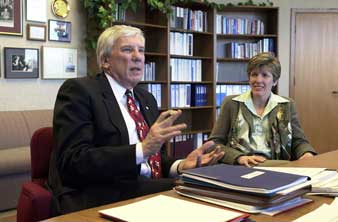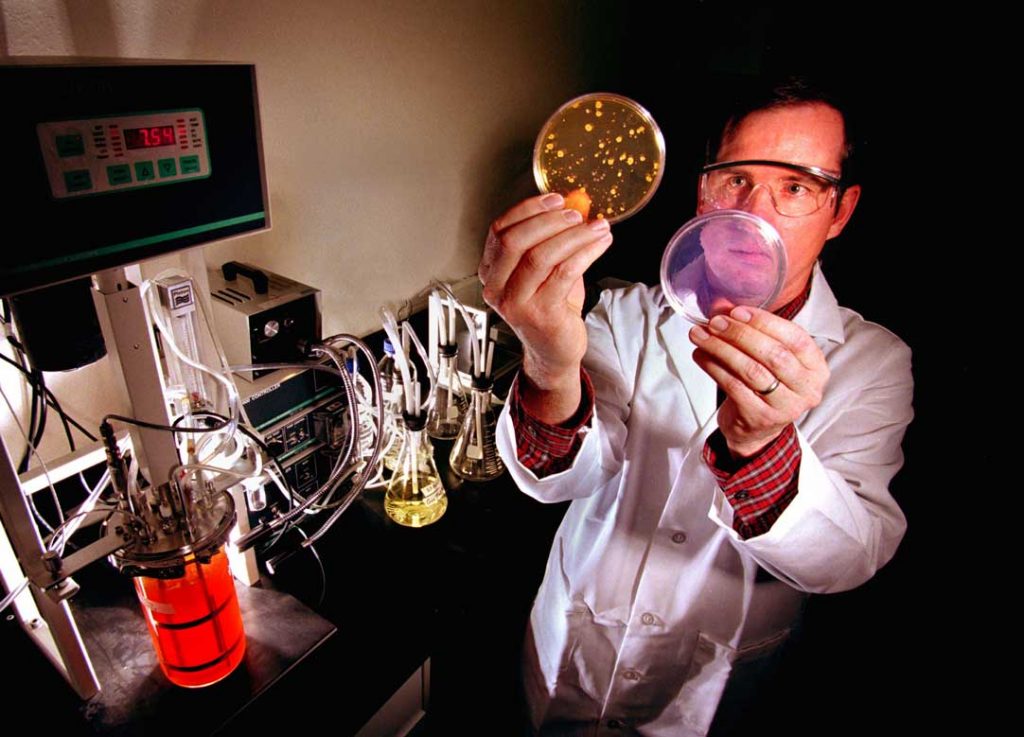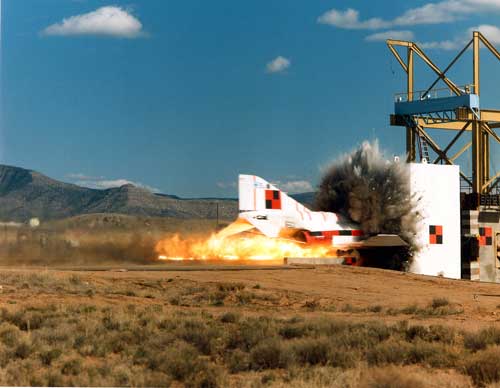Sandia expertise proved essential in weeks and months following 9/11

In the early 2001 State of the Labs interview, Sandia Labs Director C. Paul Robinson and Deputy Labs Director Joan Woodard were elated with relief and success. The preceding years were difficult. The end of the Cold War brought mission uncertainty and a dearth of weapon programs; security concerns at Los Alamos National Laboratory affected the whole nuclear weapons complex, bringing security shake-ups and stand-downs, as well as diversity issues; the creation of the NNSA to streamline and focus nuclear weapons operations and oversight within DOE was a new unknown; and funding declines resulted in ongoing workforce realignment and voluntary separation programs in 1996 and 1997.
But by February 2001, funding was up, John Gordon was the administrator of the new and stabilizing NNSA, the W80 life extension program was well underway and approved for Phase 6.3 and tech transfer was having notable success as, for example, technology for the Extreme Ulra Violet Lithography research agreement neared commercialization. Multiple programs were producing, and management was pleased.
Counterterrorism efforts before 9/11
It is not that no one was worried about terrorism as part of national security. Terrorist attacks increased in the 1990s, and technological responses and preventatives were in development. Sandia started a program in physical security after Israeli athletes were taken hostage and killed during the 1972 Munich Olympics. The famous 1988 sled track test that slammed an F-4 Phantom into a concrete wall was done on a contract studying the potential behavior of the concrete used in nuclear reactor containment. The data from that test advanced over time, feeding new models like a sourdough starter for further analysis. In the same period, technology developed for nuclear treaty verification included nuclear-radiation detection capabilities.
By the mid-1990s, national defense efforts to secure the former Soviet nuclear arsenal relied on Sandia’s transportation technologies and spurred advancement of verification-based detection research. Sandia was also involved in radiation detection technology deployed at airports and other sites, focused largely on systems analyses and architecture. As threats of weapons of mass destruction increased in 2000, Sandia finalized the Haystack study about smuggling nuclear devices into urban environments.
Chemical-biological defense in the market

The 1995 Aum Shinrikyo sarin gas subway attacks in Japan focused attention on chemical-biological and asymmetric attacks. The following year, DOE created a program for civilian chemical-biological defense to develop intelligence capabilities, sensors and other technologies to detect, deter and respond to terrorist attacks involving weapons of mass destruction. In 1997, under this program, Sandian researchers Maher Tadros and Mark Tucker developed a decontamination foam that would neutralize any number of chemical-biological agents. In July 2000, the foam was licensed to Modec Inc. and, later, to EnviroFoam Technologies. At the same time, Sandia began funding projects in chemical-biological detection, including the MicroChemLab. In 2000, a handheld, portable MicroChemLab prototype was able to detect the biotoxin proteins from biological warfare agents. Multiple technical solutions blossomed in the late 1990s as a result of this attention and funding.
On 9/11, counterterrorism technology was not immediate priority, as the attack had already happened. In the hours and days following the attacks, the NNSA and DOE requested, and Paul Robinson provided, Sandia’s expertise in systems analysis and knowledge of technology and research status across the country. Systems analysis, already considered the Labs’ specialty, had been specifically directed at weapons of mass destruction threats in the few years prior to 9/11.

The technology Sandia had on tap, ready to serve the nation, that was used in the aftermath of 9/11 was decontamination foam. EnviroFoam Technologies successfully deployed it to clean up the anthrax attacks on Capitol Hill, in mailrooms and in newsrooms following 9/11.
After laying a firm foundation of research and development at Sandia in the 1990s, it did not take a lot of redirection to build the extensive counterterrorism programs that the Labs are known for today.